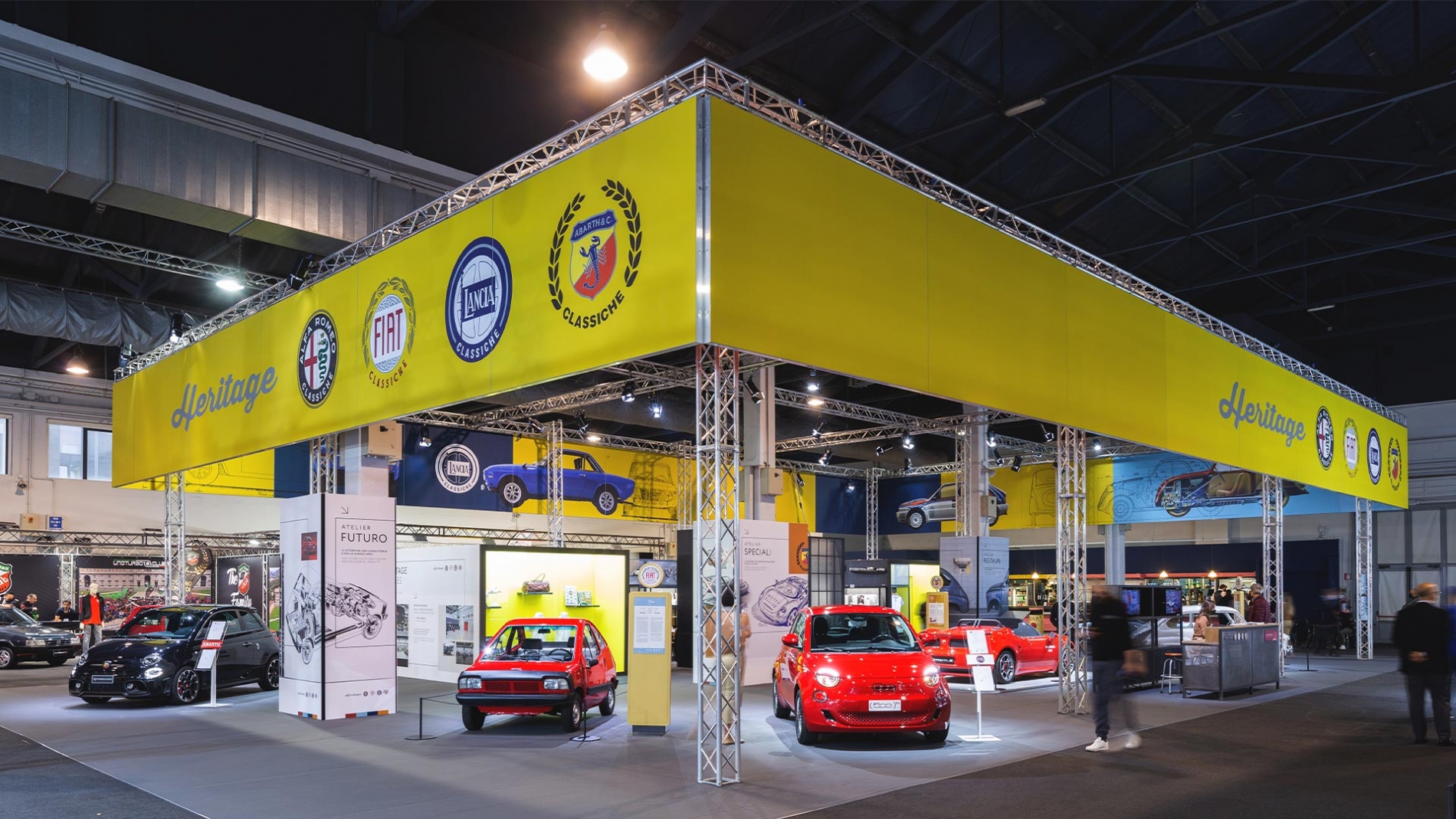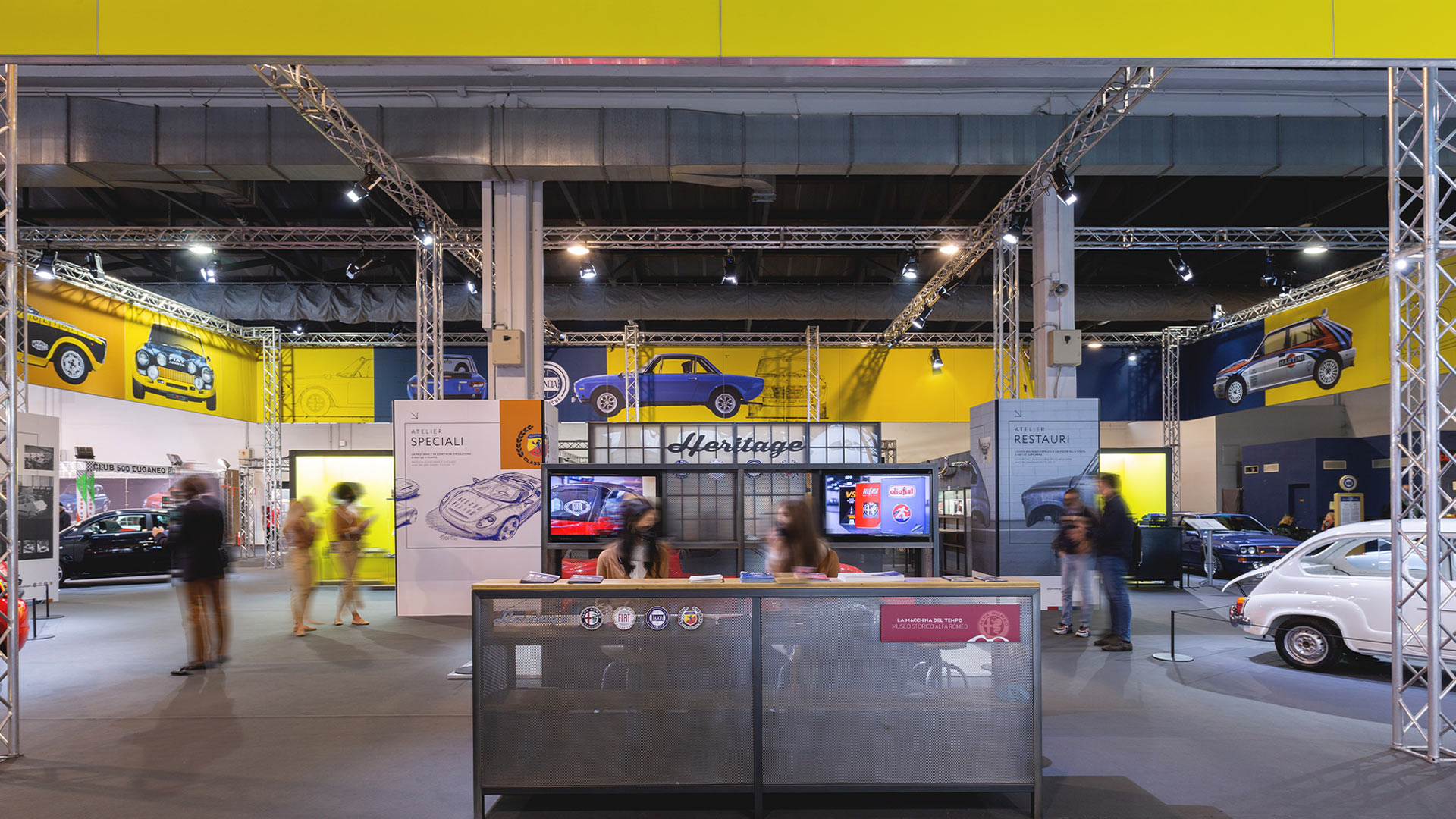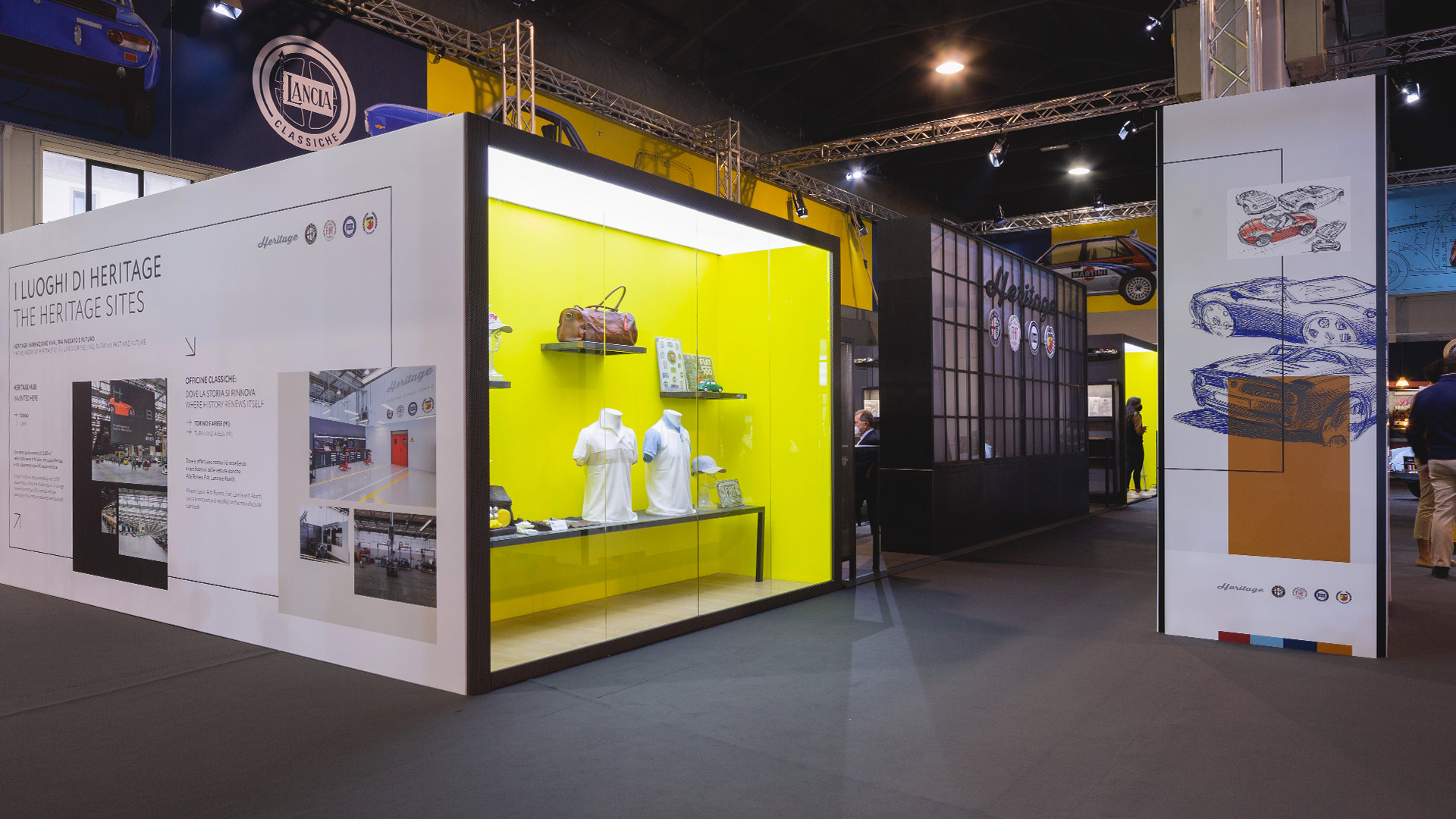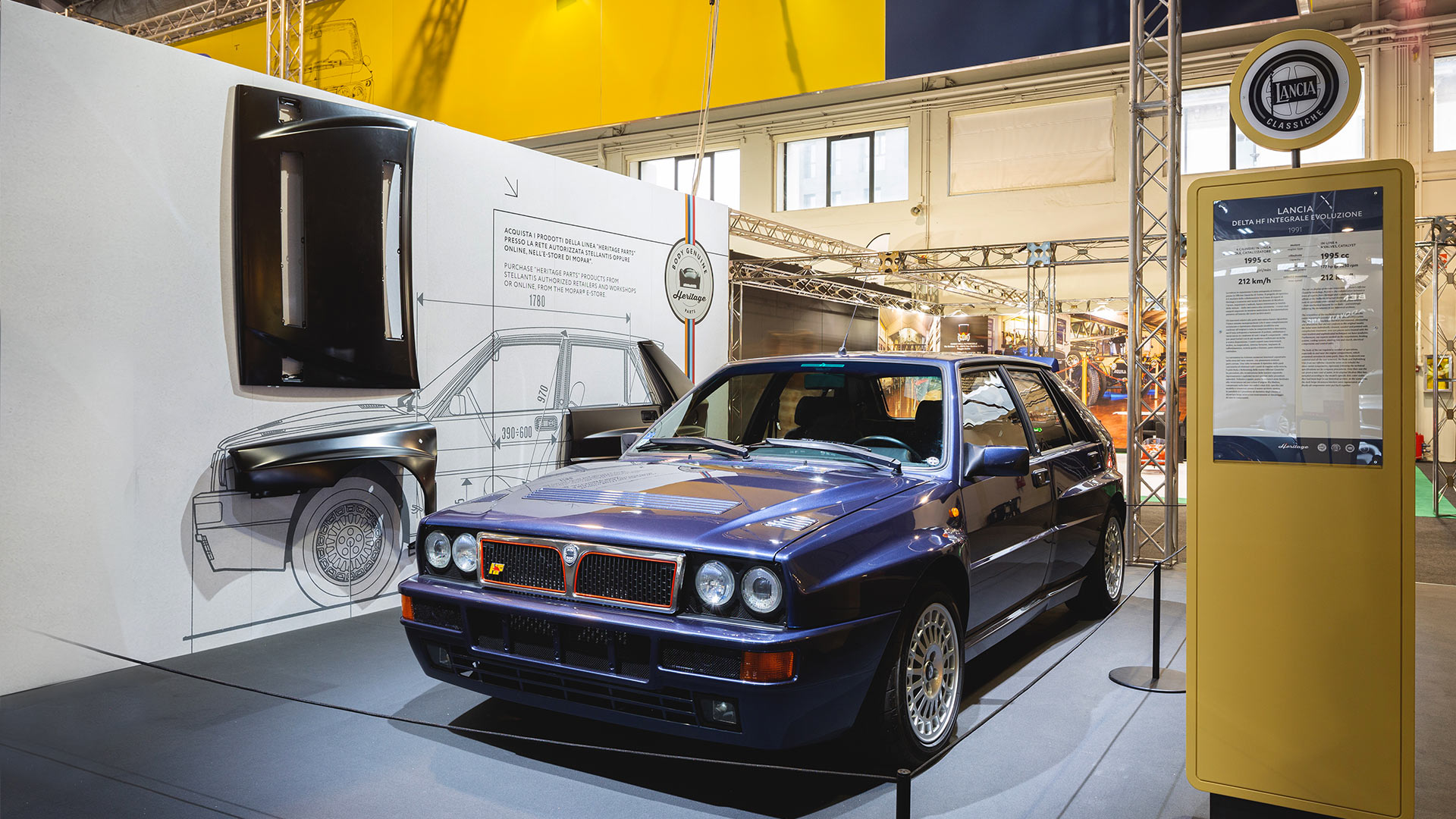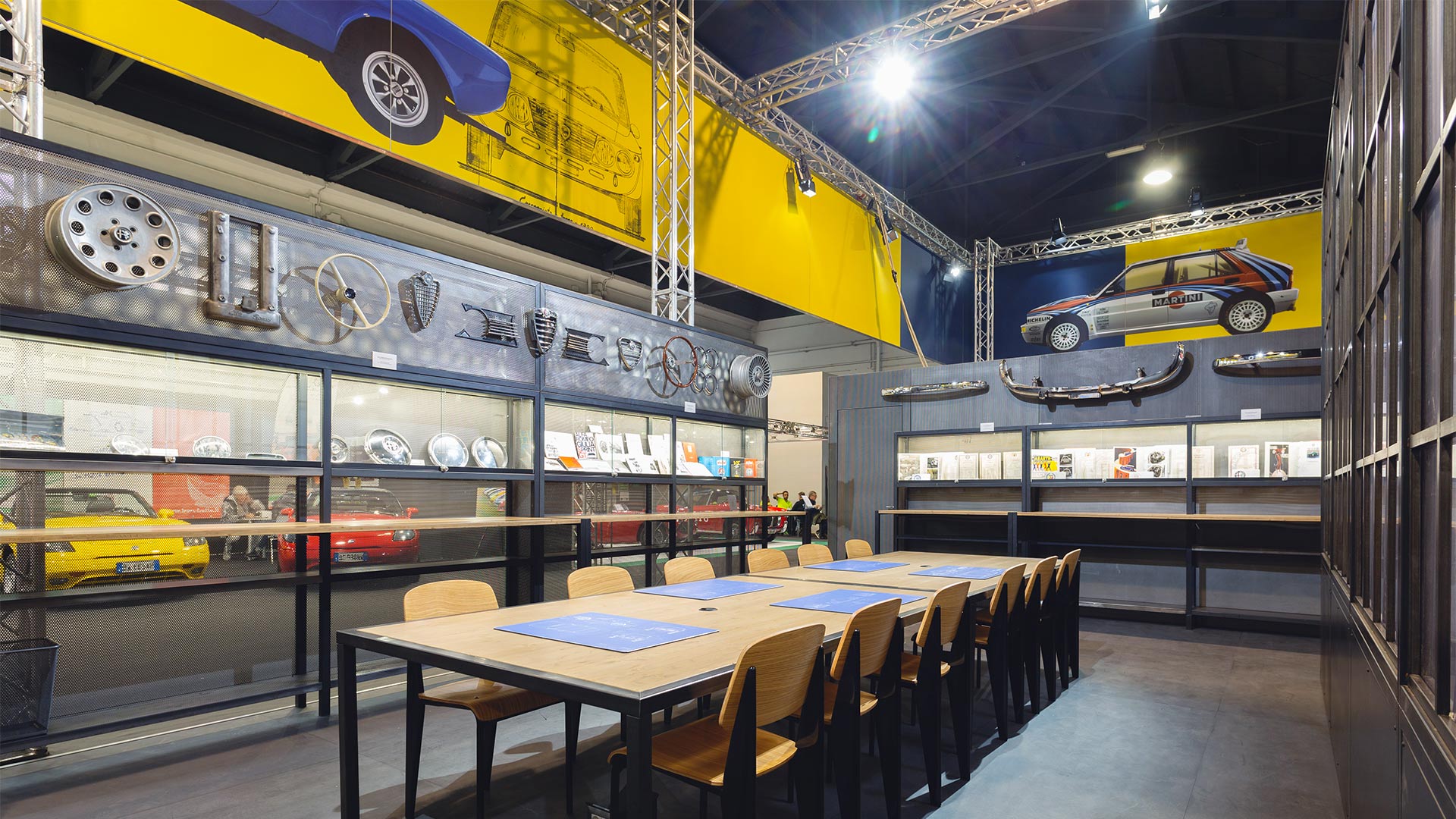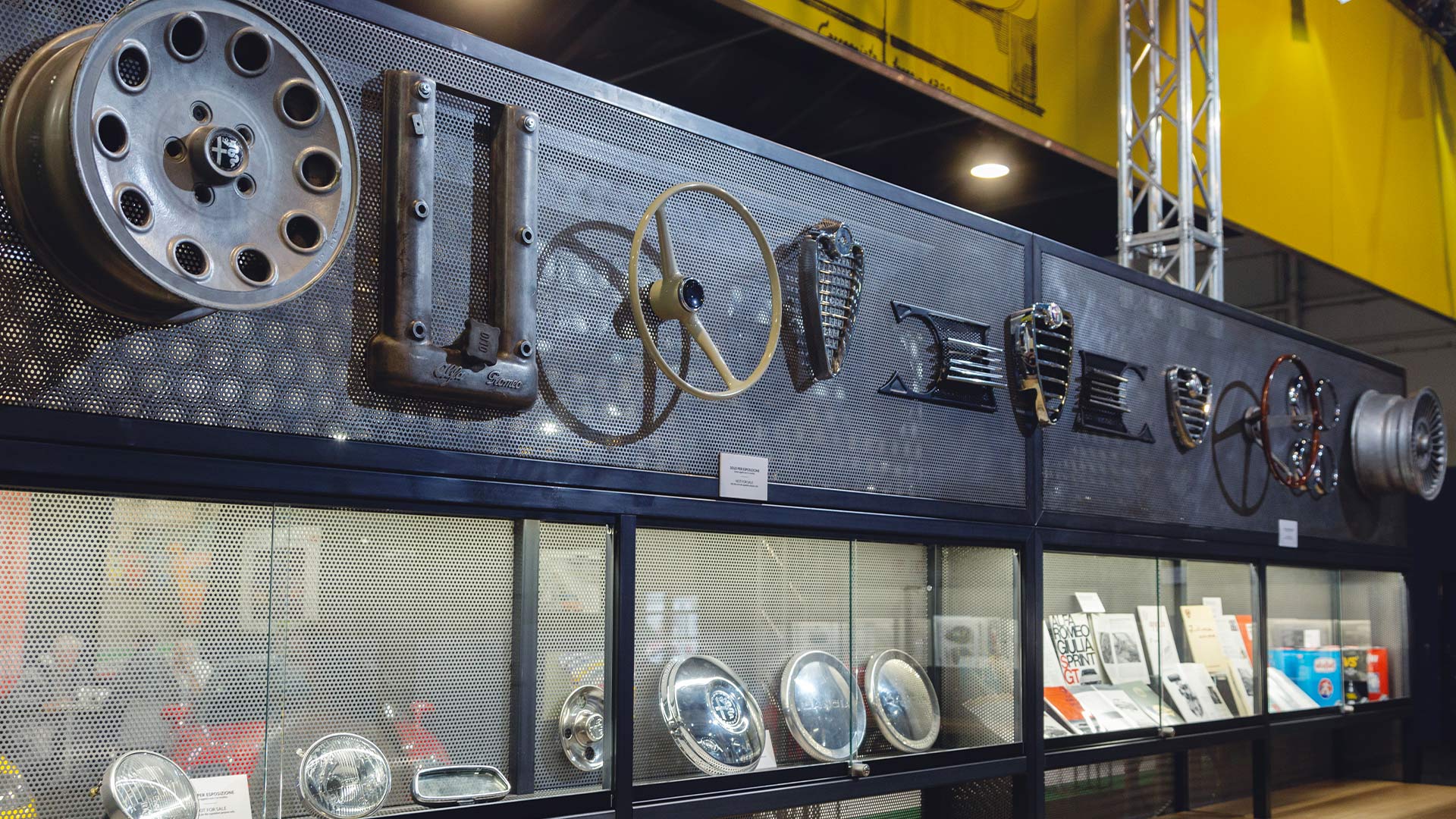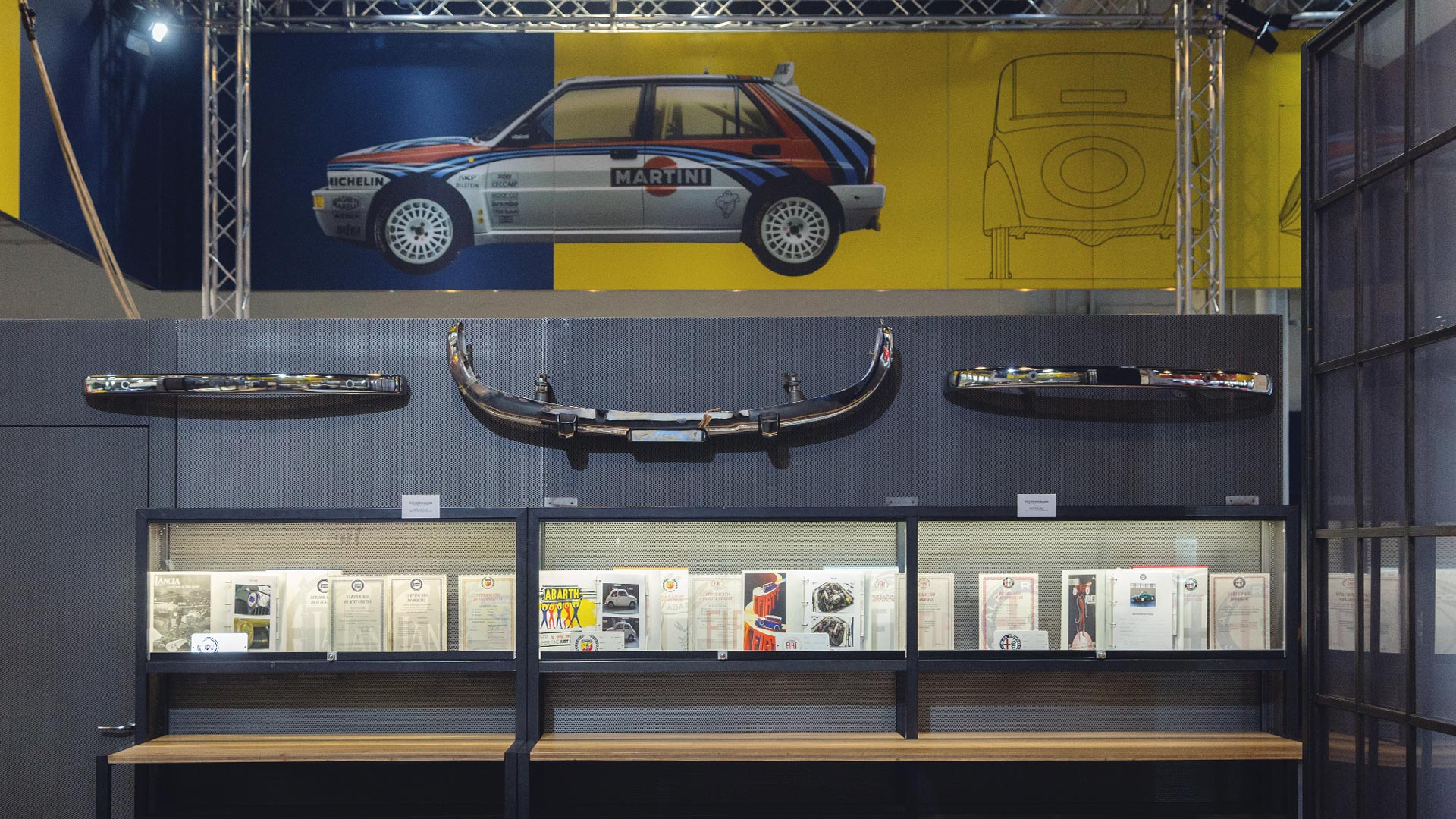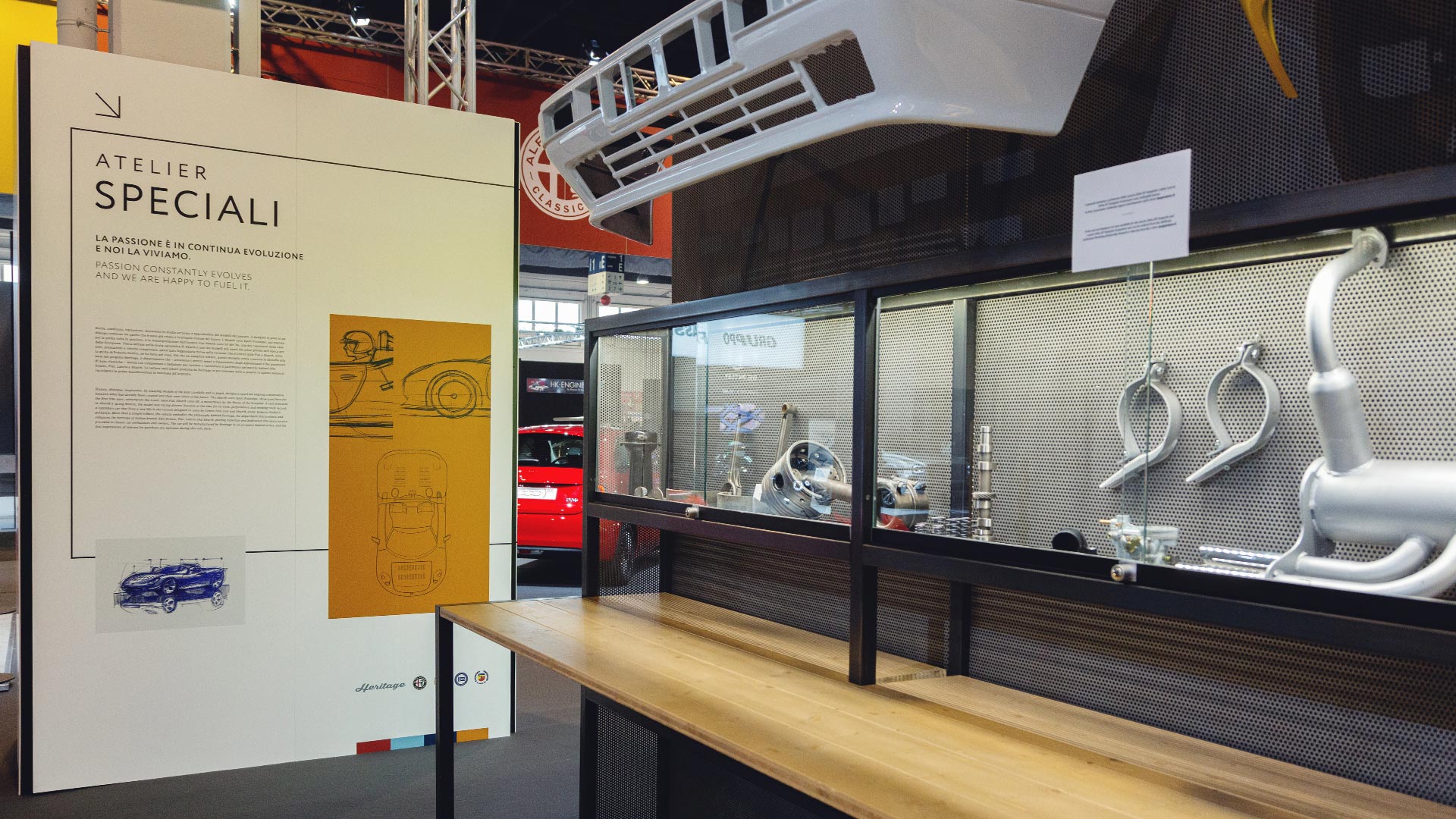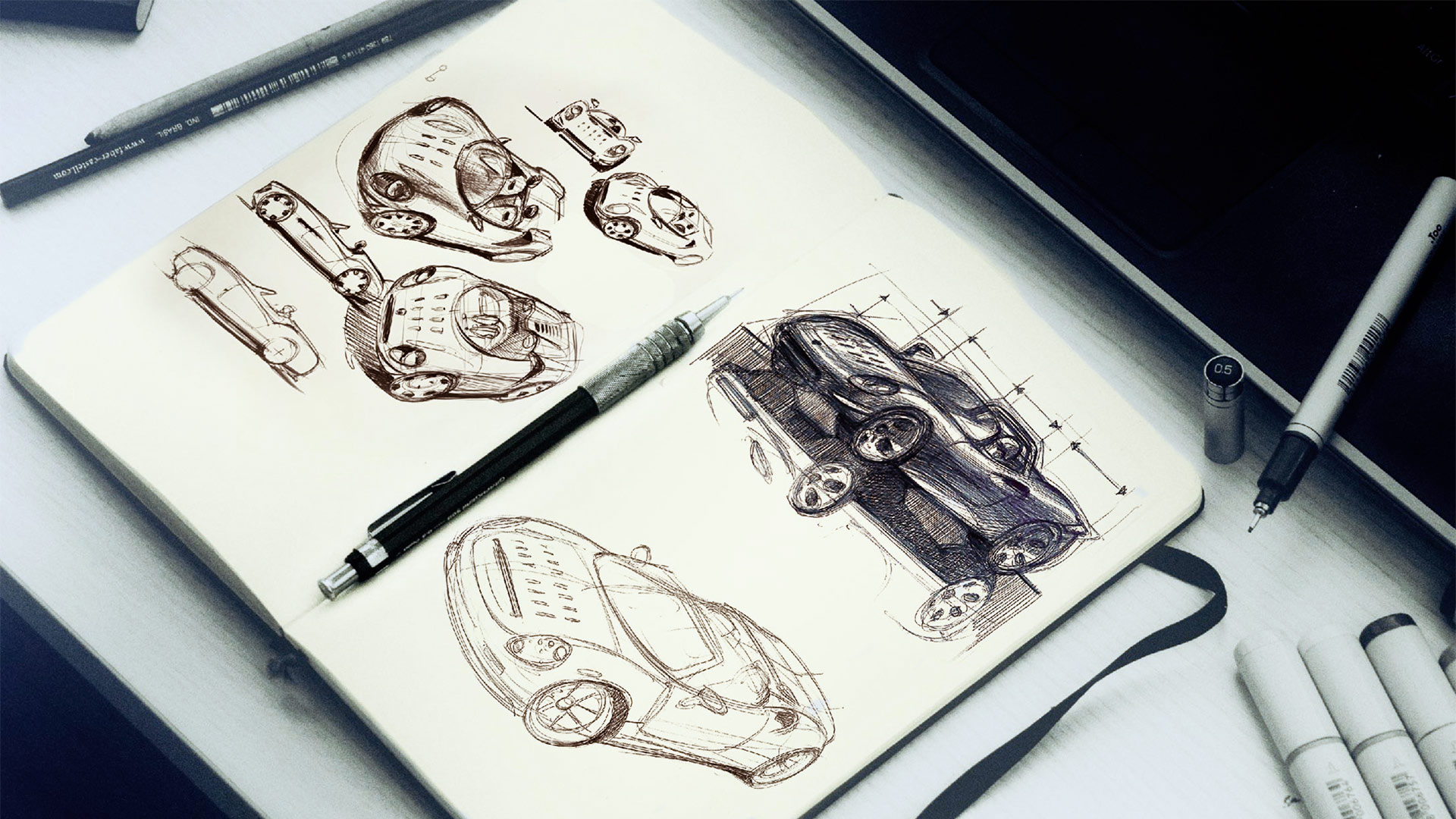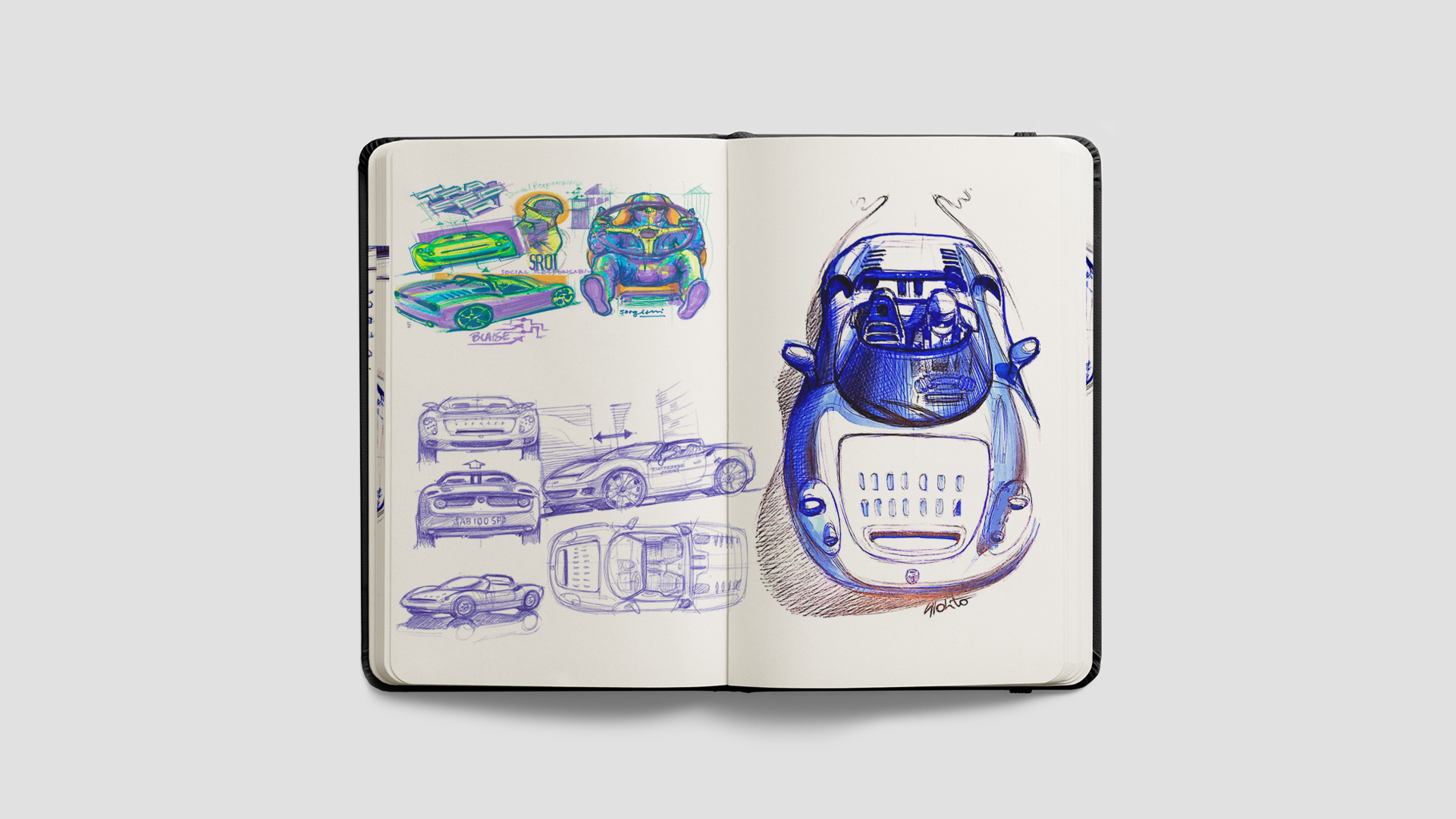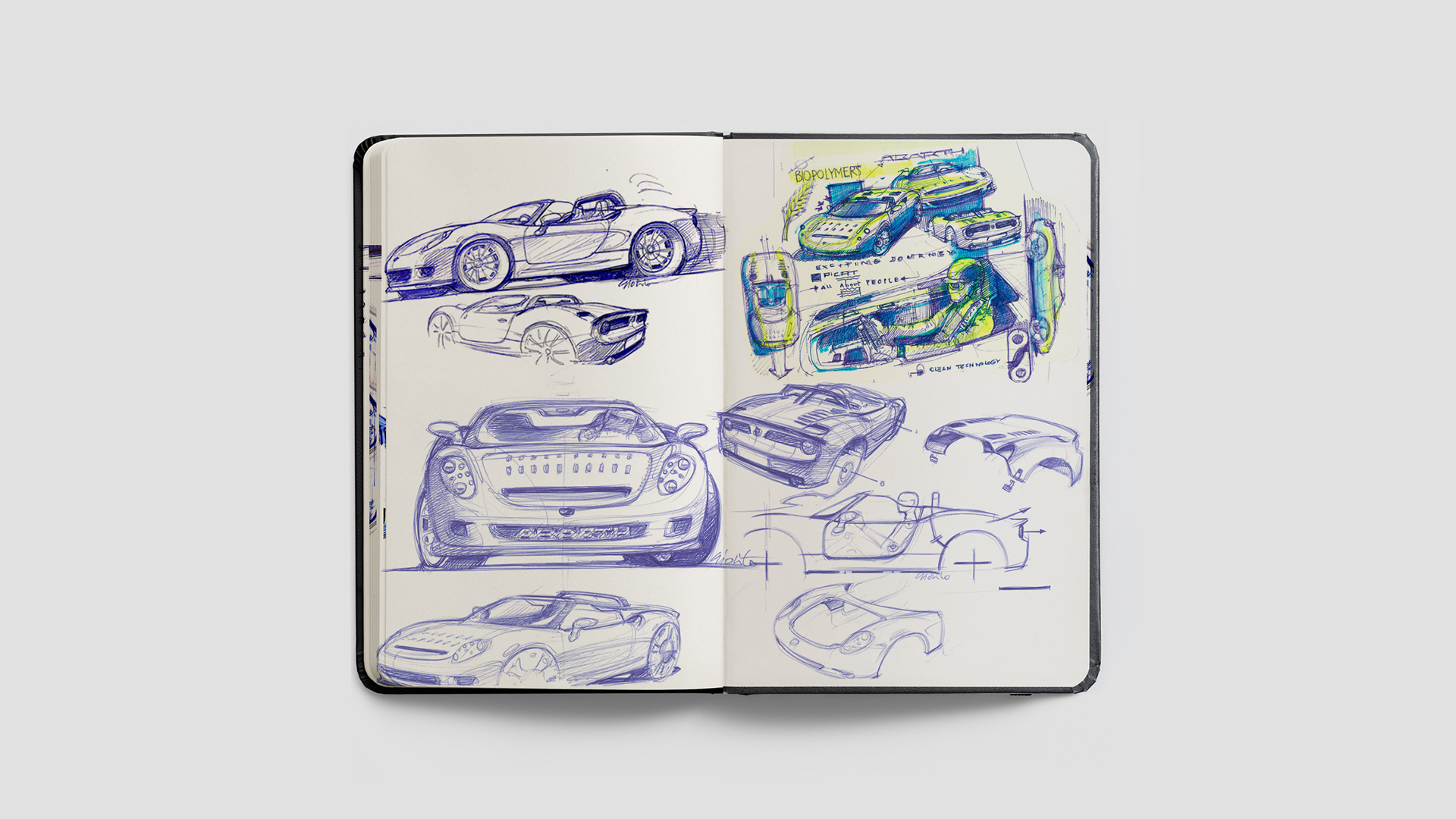The Stellantis Heritage stand, conceived and developed by Angelini Design, is divided into three parts: Atelier Futuro, Atelier Speciali, and Atelier Restauri. Angelini Design's texts differentiate and give importance to each section with story telling-style information. The Atelier Futuro section is dedicated to innovation, research, and experimentation. The 1974 Fiat X1/23 is showcased as the first electric city car, paired with today's Nuova (500) RED, symbolic of the long arc in technological evolution. Additionally, the Abarth 595 Competizione is presented to celebrate the 60th anniversary of the TC (Turismo Competizione) series, in an automobile that is superior in its performance, sacrificing nothing in its sporty aesthetic appeal.
The Speciali section is all about history, dialogue, inspiration. The Abarth 1000 Sport Prototipo, showcased here for the first time, reinterprets the iconic 1966 Fiat Abarth 1000 SP. A milestone in Abarth's racing history, this legendary car has been given new life in the 2009 version, designed under the guidance of Roberto Giolito: one of the key figures in the history of Heritage.
Restauri highlights the skills, experience, and passion that define the Officine Classiche workshop. This section presents three examples of the restoration work carried out by the specialists skilled in the renovation, repair, and certification of classic Alfa Romeo, Fiat, Lancia, and Abarth cars. The 1964 Fiat-Abarth 850 TC is exhibited as a work-in-progress, giving a glimpse into the workshop's restoration activities, showing visitors some of the less visible parts involved in the refurbishments. Instead, the 1960 Veloce Alfa Romeo Giulietta Spider is presented in its fully restored, original state. Finally, the 1991 Lancia Delta HF Integrale Evoluzione – completely restored – is presented alongside some of the bodywork parts manufactured by the company, which are available for purchase.
The concept behind the set up of the space is to pay homage and give new life to the mechanic laboratories where Heritage's experts create and refurbish automobiles of the highest quality. A collection of the replacement parts used in the process have been hung on the walls, lifting their status to that of works of art, alongside photographs of actual repair workshops featuring FCA Heritage cars. Sketches are also displayed throughout the stand, recalling the drawings that designers would make in the production process of their cars, serving as another link in the chain for visitors to understand what goes on the Officine. The classic look of a repair shop has been recreated with characteristic tape outlining positions and parking spaces, while clean geometric lines and cool, dark materials have been introduced to modernize the look. A large yellow banner surrounding the stand displays the various carmakers' logos along with that of Heritage, creating a lively, bright space that welcomes visitors.


